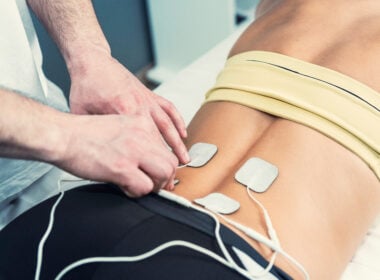Low libido can be a bit of an embarrassing topic for many, but it’s actually a pretty common physiological condition. It’s even considered normal in certain seasons of a woman’s reproductive life. So can you know the difference between what is normal vs. what’s not? And can anything be done? Yes, and yes.
Let’s step into biology for a moment. What drives libido? We know that the 4 main hormones responsible for balancing and maintaining sex drive are estrogen, testosterone, cortisol, and thyroid hormone. If one of these hormones is off, it’s likely to affect the others.
Understand the hormones affecting libido
Learning a Fertility Awareness-Based Method (FABM) or Natural Family Planning (NFP) can help a woman understand the ups and downs of different hormones during her menstrual cycle, and therefore what natural fluctuations in libido look like.
Estrogen/Testosterone
Women experience a natural boost in libido in the days prior to ovulation due to the growing follicles creating estrogen. Women also produce testosterone in the ovaries and in the adrenal glands. Both estrogen and testosterone are crucial in the growth, maintenance, and repair of reproductive tissue as well as in building bone mass.
Cortisol
Cortisol, known as the body’s “built-in alarm system,” alerts the brain when there is a stress (either physical or mental), regulates blood pressure, simmers down inflammation, controls wake/sleep cycles, and boosts energy. So, it’s kind of important.
Thyroid Hormones
Lastly, the thyroid is an important factor in the body’s hormonal balance. The two main hormones produced and released by the thyroid gland are T3 and T4. TSH (Thyroid Stimulating Hormone) is created in the pituitary gland—the same place our menstrual hormones Follicle Stimulating Hormone (FSH) and Luteinizing Hormone (LH) originate from! This trio is responsible for regulating metabolism of vital nutrients and vitamins and has an effect on our basal body temperature—a term Sympto-thermal charters are all too familiar with!
So what does all this have to do with libido? Everything! Depending on what reproductive season you are in, you might be producing different amounts of different hormones. Postpartum and breastfeeding women produce less estrogen due to prolactin suppressing ovulation. Postpartum women are also prone to either hypothyroidism (producing too low levels of thyroid hormones) or hyperthyroidism (producing too much). If you are experiencing extreme levels of stress, cortisol could be flooding your system, which is likely to leave you feeling hyper and exhausted.
So what’s normal? Everyone is different, but it’s up to each individual to get in tune with their own body. It’s likely that if something is off, you’re aware of it on some level. So here are some practical tips on restoring healthy levels of libido.
What you can do
Cut down on refined carbs, sugar, and caffeine.
I know you see it in every wellness article ever, but it’s simply the easiest, quickest, and most powerful way to reset your hormonal system. Refined carbs (like those delicious scones and that late-night pizza slice) have a way of acting on your system to increase cortisol levels, and interfere with digestion, where many hormone receptors live. When Cortisol rises from unsteady blood glucose (which happens on a diet high in refined carbs) cortisol steals proteins from your sex hormones to get energy.
I’m not saying you can’t ever eat bread again, but try to incorporate whole grains, pastured meat, wild fish, and lots of in-season fruits and veggies as a part of your staple diet. And if you do eat a generous serving of carbs, pair it with a protein like a nut butter! Healthy fats and proteins are particularly important for the endocrine system as they form the basis for these cells.
Utilize your menstrual cycle and circadian rhythm.
Women often experience libido changes over the course of the month as their menstrual cycles progress. Charting your cycles with Fertility Awareness-Based Methods or Natural Family Planning can help you grow in understanding of how different phases affect libido. The ovulatory phase is known as a time of high libido (nature’s way of making sure we do, in fact, propagate the species) but did you know there is a second wave of estrogen halfway through the luteal phase, just when progesterone begins to decline? This can be a great time to utilize that estrogen boost for a little intimacy.
Also, consider that when you are closing your nighttime book, cramming that last email, and washing your face at the end of the day might not be a time of natural high libido. If you are able to prioritize intimacy for a time in the earlier part of the day, your hormones are more likely to be at top levels.
Chill out.
It’s a no-brainer that stress destroys libido. We’re never going to abolish stress all together, and some stress is in fact necessary for both survival and performing our personal best, but reducing unnecessary stress is key. Incorporating a spiritual practice of prayer and meditation can work wonders. Making a habit of bodywork, like massage and acupuncture, also helps reduce stress levels. And managing your workload (saying “no” is actually a strength!) communicates to your body that it does not have to be in fight-or-flight mode all the time. When stress levels lower, libido rises.
Consider your other medications.
Did you know hormonal birth control can tank your libido? Hormonal contraception suppresses the natural production of all steroid hormones, including estrogen and testosterone. Low libido is a common side-effect, and women often report feeling a little more zest for intimacy when they come off their hormonal birth control.
In addition to birth control, drugs that can affect hormones responsible for sex drive are antidepressants, benzodiazepines (anti-anxiety drugs), medical marijuana, beta blockers, anti-seizure meds, and antihistamines. You may not be able to compromise on some medications, but just knowing where your libido has gone off to can be helpful.
Get tested.
Lastly, getting your levels of Estrogen, Testosterone, Cortisol, and Thyroid Hormone checked could be an important piece of your journey understanding what’s going on in your body. Make sure your doctor is doing targeted testing for hormones at appropriate times in your cycle and testing your T3 and T4 levels, not just your TSH as an indicator of thyroid function.
At the end of the day, libido can be unique to each individual. Keep in mind that transitional seasons, like postpartum and perimenopause, as well as times of intense pressure (job change, moving, caring for the sick), might be times of naturally low libido. There may be aspects of a couple’s values, psychological life, or communication differences that could be contributing to less physical intimacy as well. One thing’s for sure, if you wish for more frequent intimacy but you find yourself unable to get there mentally or physically, it’s worth taking steps to improve it!











